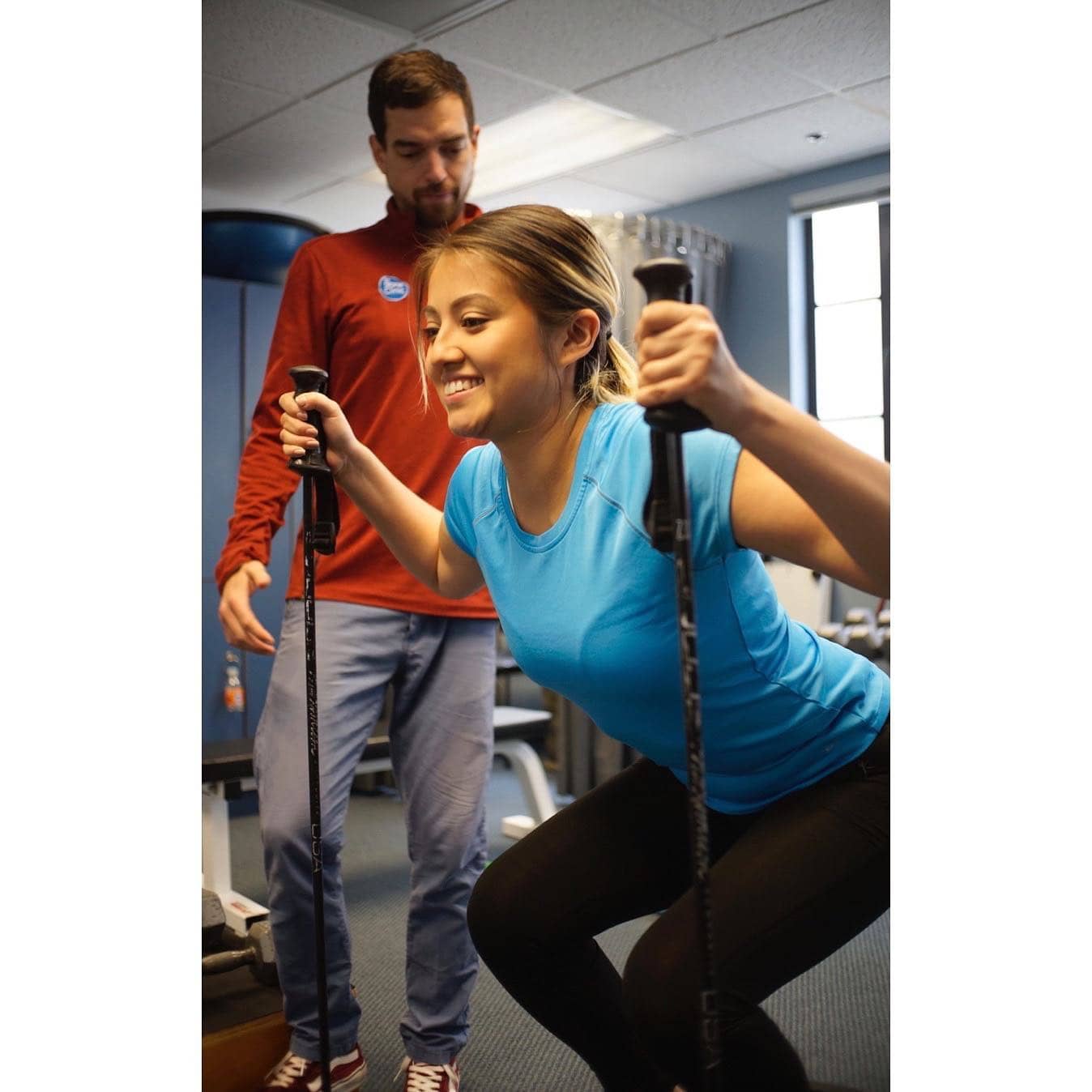Top Ten Pre-Ski Season Tips
Hear From Our Patients
Back to Skiing on a Total Knee ReplacementSki season has already started, but it is not too late to optimize your program and diminish your risks. Here are ten of our favorite suggestions:

- Plan your season. Since most people are not skiing every day, the time before the season begins and between ski trips is an opportunity to optimize your ski fitness. Plan your exercise regimen and find a trainer to help push you.
- Flexibility matters as much as strength. Use each session to improve your hip, back, shoulder, ankle, and knee flexibility. Since skis are shaped and boots are now more flexible, using your entire arc of joint motion permits you to dance down the mountain.
- Strength does matter. Many athletes become deconditioned in-season. They gear up for playing their game on the weekends but lose the benefits of the strength training they did pre-season. Think of the in-season time as an opportunity to increase your strength. While you can ski yourself into shape, it is far better to build the musculature that drives the human engine.
- Balance and coordination are often lost—primarily after any injury, but also during downtime. Simple exercises, like standing on unstable surfaces, using small trampolines, or engaging in sports like stand-up paddling, are hugely helpful in maintaining these skills.
- Cardiovascular fitness. Skiing occurs at altitude, but most people don’t acclimate before going. Train your heart and lungs by pushing yourself on the bike, in the pool, in your runs, and on hikes. If you are out of breath at sea level, you surely will be at altitude.
- Mental fitness. Ski injuries are often mental errors. Along with inspiring focus, skiing also provides the opportunity for playing, relaxing, expanding your vision, and liberating your thoughts. This is great—as long as you are not distracted. Leave the cell phone off, free the mind of stress, and exalt in the beauty of the outdoors. You don’t have to go skiing to practice this!
- Joint injuries and arthritis are part of aging. They don’t have to limit your sports as long as treat them well. Fix the problems—whether a torn meniscus, ligaments, or rotator cuffs—and lubricate them with hyaluronic acid and growth factor injections. Just as you wax your skis each season, you can lubricate your creaky joints.
- Optimize your weight. Obesity is tough on the joints, and the definition of obesity is much stricter than most people realize. Start with your diet, focusing on protein while reducing fat and carbohydrates. Use water as your primary beverage; have a glass before each meal. Set a goal of an optimal weight for yourself. And hydrate during the day, especially when outdoors.
- Tune your gear. Well-tuned skis and tested bindings reduce knee injuries. The first stop on your way to a ski trip is the shop, to tune and test. Never skip this step, as last year’s skis are not ready for this year’s snow.
- Take a SkiFit class and learn new exercises and ways to play on and off the mountain. Mix up your skiing with snowshoeing, cross-country skiing, backcountry trips, and winter hikes.

